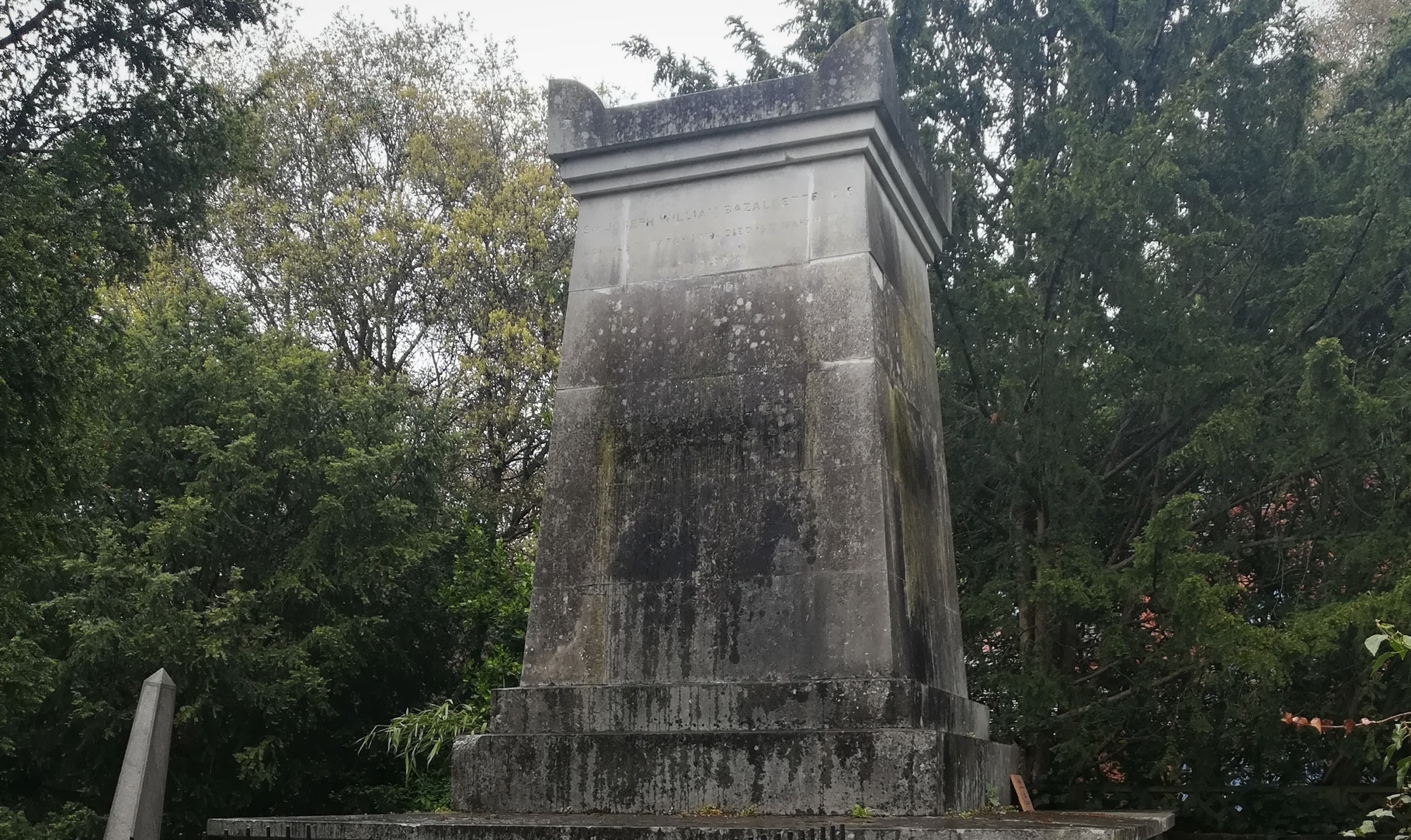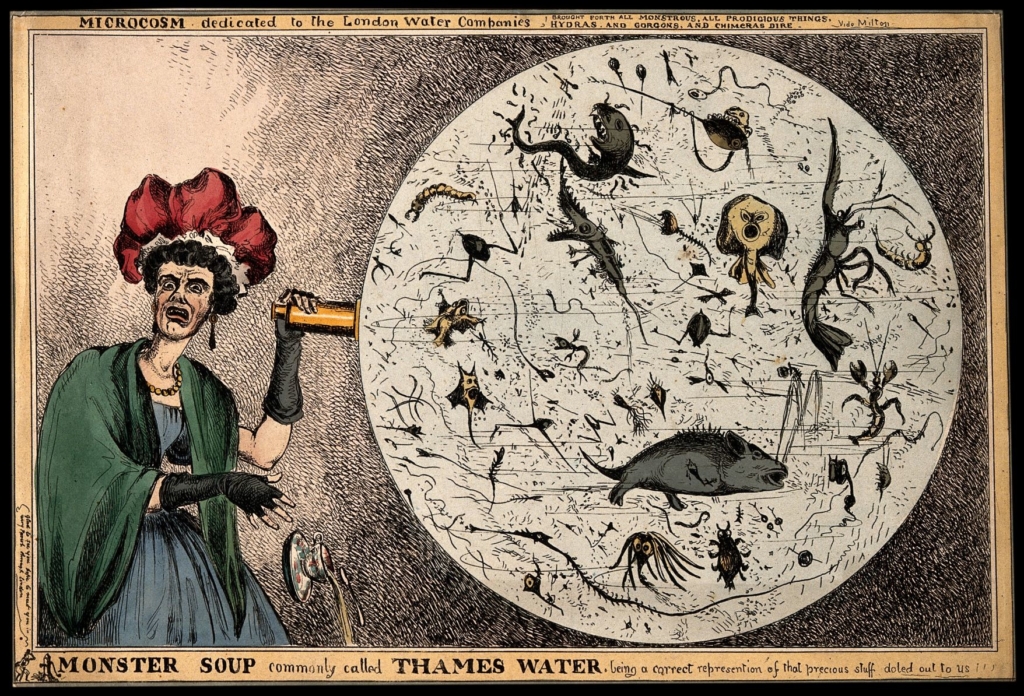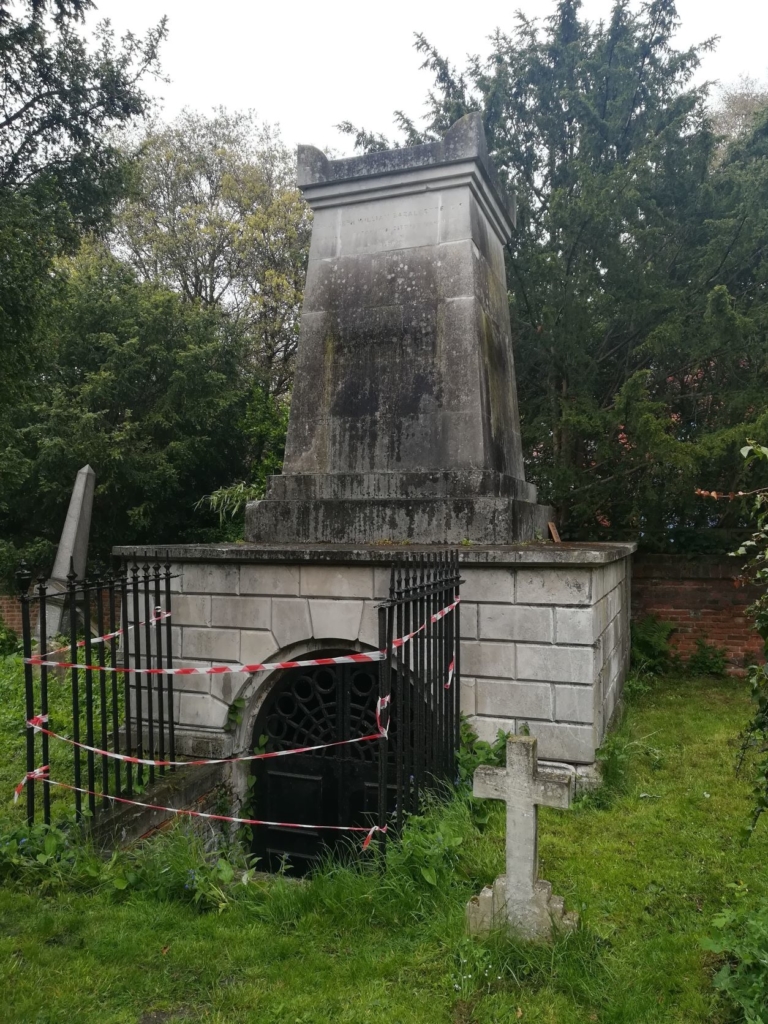Bazalgette Mausoleum
Tucked away in the graveyard of St. Mary's church Wimbledon is the tomb of Sir Joseph Bazalgette, the man who tamed the River Thames and rid London of disease. Sir Joseph Bazalgette was the Chief Engineer to the Metropolitan Board of Works and masterminded the construction of the London sewer system. Read on to learn how Habitats & Heritage are helping to keep his legacy alive by restoring the mausoleum to this illustrious Victorian.

Sir Joseph Bazalgette
Sir Joseph Bazalgette (1819-1891) was Chief Engineer to the Metropolitan Board of Works, a London wide body responsible for large scale infrastructural improvements to the rapidly expanding metropolis. Bazalgette is immortalised as the man who rid London of Cholera and pollution as well as engineering the Thames Embankments, bridges, streets and parks.
The Great Stink of summer 1858 was coined when London’s air turned putrid when the stagnant River Thames turned into a giant cesspool of the city’s effluent. The resulting stench led to parliament fleeing Westminster and authorising Bazalgette to solve the issue.
Sir Joseph Bazalgette formulated a system of two large intercepting sewers running from west to east, north and south of the Thames that would collect all the wastewater from existing sewers which vented into the river. The new brick sewers carried waste by gravity to large pumping stations at Abbey Mills and Crossness in the far east of the metropolis where the effluent was pumped into large containment tanks which released as the tide of the Thames began to retreat towards the North Sea. In removing the contaminated water, Bazalgette’s system improved the health of the river and contributed to the end to Cholera epidemics which had killed thousands of Londoners over the previous decades.
Bazalgette’s sewers are still in use today and are only just being supplemented to meet the demands of a 21st century London. Many of his achievements can be admired above ground, including the Victoria and Albert Embankments, Hammersmith Bridge and the Abbey Mills and Crossness Pumping Stations. The latter of the two has been preserved in its Victorian condition with original steam engines.


monstrous contents of a magnified drop of Thames water; revealing the
impurity of London drinking water. Coloured etching by W. Heath, 1828. Source: Wellcome Collection.



The Mausoleum
Tucked away in the graveyard of St Mary’s Church, Wimbledon, is the family mausoleum of the Bazalgette family containing Sir Joseph Bazalgette, his wife Maria, and five of their eleven children.
Built of Portland Stone by Mr Gibson of Hackney, the mausoleum has an obelisk with sloping sides adorned with a prominent acroteria. This sits above a square rusticated base with steps leading down to the arched entrance of the vault, which is protected by heavy metal gates. Inside, set back from the entrance, is space for nine coffins, eight of which are occupied and capped with engraved plates. The rear of the mausoleum seems to have been extended, with the space between the base and the cemetery wall filled in with modern engineering bricks – the reason for the extension remains unclear.
Unusually, the mausoleum was not built for the Bazalgette family. In fact, it was constructed 15 years before Sir Joseph Bazalgette was born, having been commissioned by John Anthony Rucker, originally from Hamburg, who died in 1804. Rucker’s coffin occupies one of the nine spaces inside, and is the only person outside of the Bazalgette family to buried in the mausoleum.
Rucker was a banker and merchant who owned extensive slave plantations in Grenada, a former British colony in the West Indies. The UCL Centre for the Study of the Legacies of British Slave-ownership, documents the coffee and sugar plantations that Rucker owned across the island with his business partner John Harvey.
Like many of his contemporaries involved in the transatlantic slave trade, Rucker left behind a huge sum of money when he passed away – the equivalent of £5.3 million today. With no children of his own, he left most of his wealth to his nephew Daniel Henry Rucker, who inherited John Rucker’s estates and it is assumed the mausoleum, but not specified, in the will. Daniel’s company was adjudicated bankrupt in 1831 and he died in 1846.
We do not know how Sir Joseph Bazalgette came to purchase the eighty-year-old tomb, or indeed why he chose one already built for another family. It appears that Bazalgette had moved to Morden before 1851 and to Wimbledon in 1873, but there is no evidence that Bazalgette was familiar with the Rucker family. We do know that the Bazalgette family lived locally and had a close relationship with the church – the graveyard of which, was already full when Charles Norman Bazalgette, Sir Joseph’s son died.
In the meantime, this rather unassuming mausoleum, which is on the Heritage At-Risk Register, is the resting place of two men whose work embodies the very best and worst of British history.
Habitats & Heritage is embarking on a project to secure the future of this challenging mausoleum which is deteriorating. The vaulted roof has begun to collapse onto the crypt and the iron railings broken away.
Follow this link to read a blog about the Bazalgette Mausoleum which delves deeper into the mystery.
Sir Joseph Bazalgette’s Legacy
Much of Bazalgette’s master creations are hidden from view, manifesting predominantly as brick tunnels running below the streets and parks of London. These unseen sewers which snake their way across the metropolis have kept it free from disease and smell for over 150 years. Where his work appears above the surface it certainly can’t go unnoticed. The Victoria and Albert embankments are perhaps the best well known examples, which carry traffic on the surface, hold back the tide to the side, and hide the sewers and the District Line railway below. Crossing the river Bazalgette built several bridges including the Albert and Hammersmith Bridges.
Lesser known yet equally glorious were the ‘cathedrals of sewage’ at Abbey Mills and Crossness pumping stations. These infrequently seen masterpieces of iron and brick reside on active Thames Water sewage treatment works and continue to keep London free of pollution, continuing Bazalgette’s legacy in the modern day. Sir Joseph’s mausoleum is the final chapter in his great life and should be conserved ad celebrated to ensure his achievements are never forgotten.



The Project
Habitats & Heritage are looking to raise the necessary funds to restore this magnificent Grade II listed structure and remove it from the Historic England’s heritage at risk register. Our project will also feature an extensive education and outreach programme which will be aimed at the whole of London and the Thames basin. This aspect of the project will aim to raise awareness to scarceness of water resources, plastic pollution in water courses, promote STEM learning and ensure that as many and as diverse as possible communities are reached.
If you would like to learn more about our project or receive a talk from us about Sir Joseph Bazalgette & the Great Stink of London, please email us at: hello@habitatsandheritage.org.uk
You can also contribute towards the restoration works by donating here: Bazalgette Mausoleum Project – Habitats & Heritage (habitatsandheritage.org.uk)
Heritage programme and project proudly supported by

Read about our other heritage projects including the St. Leonards court air raid shelter in Sheen.
-

Bazalgette Mausoleum Project
Habitats & Heritage is raising funds to restore the Grade II listed mausoleum for Sir Joseph Bazalgette, the engineer of the London sewer system and to remove it from Historic England’s at risk register. The project will include an extensive education and outreach programme which will be aimed at the whole of London and the Thames basin. The project will aim to raise awareness to the scarceness of water resources, plastic pollution in water courses, promote STEM learning and ensure that many and diverse communities are reached.
£0.00 donated of £10,000.00 goal
Keep in touch!
Sign up for our monthly newsletter and be first to hear all the news, opportunities and events from the Habitats & Heritage community



